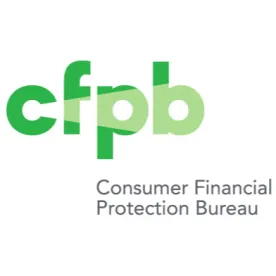The CFPB’s annual fair lending report covering its 2018 activities was published in today’s Federal Register. While most of the report recycles information about which we have previously blogged, it does contain the following noteworthy information:
-
In September 2018, the CFPB held a symposium to address the issue of access to credit for consumers who are “credit invisible” – that is, those without an established credit history with the three national credit reporting agencies – and who therefore cannot be scored by most traditional credit scoring models. In conjunction with the symposium, the Bureau released its third “Data Point” report focused on “credit invisibles.” In our blog post about that report, we commented that the CFPB should encourage alternative scoring models that enable underwriting decisions to be made with respect to “invisible” consumers, and should refrain from heavy-handed application of the disparate impact theory with respect to such models. (That theory could, theoretically, be used to attack scoring models that approve members of protected classes proportionately less, but the business justification of the model’s ability to predict repayment performance should cause the Bureau to refrain from asserting it in this context.)
-
In addition to discussing the symposium and Data Point report in the section on “Access to Credit,” the new fair lending report discusses conducting supervisory reviews of alternative credit scoring models. It comments that “[t]he use of alternative data and modeling techniques may expand access to credit or lower credit cost and, at the same time, present fair lending risks.” The Bureau states that in 2018, the Office of Fair Lending recommended supervisory reviews of third-party scoring models that would “focus on obtaining information about the models and compliance systems of third-party scoring companies for the purpose of assessing fair lending risks to consumers and whether the models are likely to increase access to credit. Observations from these reviews are expected to further the Bureau’s interest in identifying potential benefits and risks associated with the use of alternative data and modeling techniques.” The Bureau also comments that while a significant focus of its interest is on how alternative data and modeling can expand credit access for credit invisibles, it is also interested in other potential direct or indirect benefits to consumers, “including enhanced creditworthiness predictions, more timely information about a consumer, lower costs, and operational improvements.”
-
The Bureau identifies the following two “new focus areas for fair lending examinations or investigations”: (1) student loan origination—whether there is discrimination in policies and practices governing underwriting and pricing; and (2) debt collection and model use-whether there is discrimination in policies and practices governing auto servicing and credit card collections, including the use of models that predict recovery outcomes. (We recently released a podcast in which we discuss the opportunities and challenges created by the use of artificial intelligence models in consumer financial services, including the benefits of explainable AI and its implications for the consumer financial services industry, especially for applications where understanding the model’s reasons for returning a score or decision are necessary.)
-
The Bureau also reports that its fair lending supervision work continued to focus on mortgage origination, mortgage servicing, and small business lending. With regard to small business lending, the Bureau focused on assessing whether (1) there is discrimination in application, underwriting, and pricing processes, (2) creditors are redlining, and (3) there are weaknesses in fair lending related compliance management systems. The Bureau identifies mortgage lending discrimination, including redlining, as the focus of its fair lending enforcement efforts. It states that at the end of 2018, it had a number of pending fair lending investigations into redlining and other areas involving a variety of consumer financial products.
-
In its Spring 2019 rulemaking agenda, the Bureau restored Section 1071 rulemaking to current rulemaking status (where it had previously been before being reclassified as a long-term item), with January 2020 indicated as the date for pre-rule activity. In the fair lending report, the Bureau states that it will recommence its work on Section 1071 with a symposium on small business lending data collection and will announce details regarding the symposium on its website at a later time. (A lawsuit has been filed against the CFPB by two community groups and two individuals seeking a declaration that the CFPB’s delay in issuing regulations implementing Section 1071 of the Dodd-Frank Act violates the Administrative Procedure Act and requiring the CFPB to promptly issue such regulations.)
-
The Bureau also references former Acting Director Mulvaney’s statement in May 2018 that the Bureau intended to reexamine the disparate impact doctrine in light of the U.S. Supreme Court’s Inclusive Communities decision and confirms its plans to hold a symposium on disparate impact and the ECOA.



 />i
/>i

